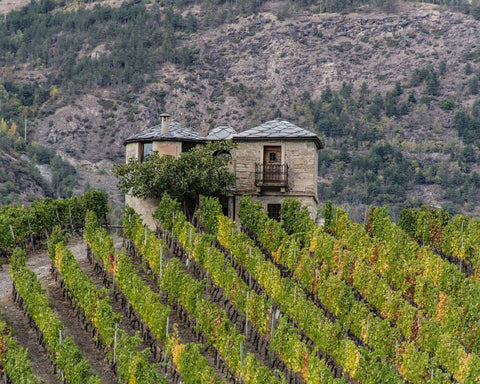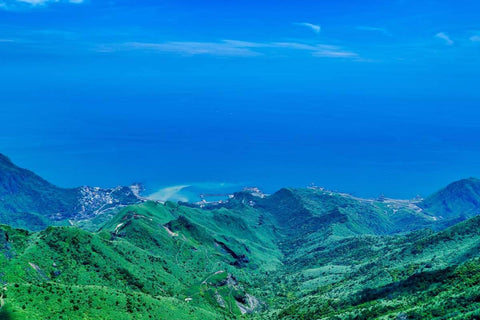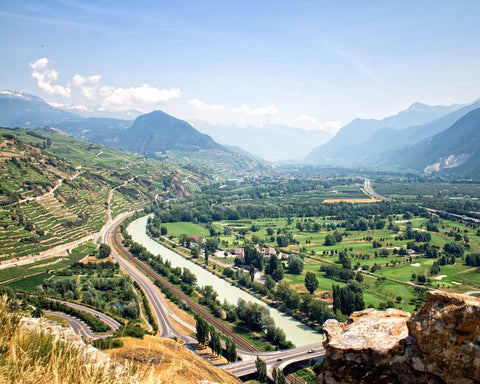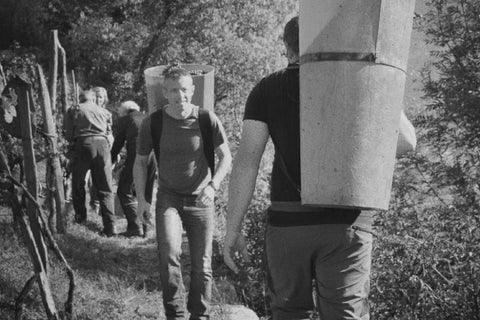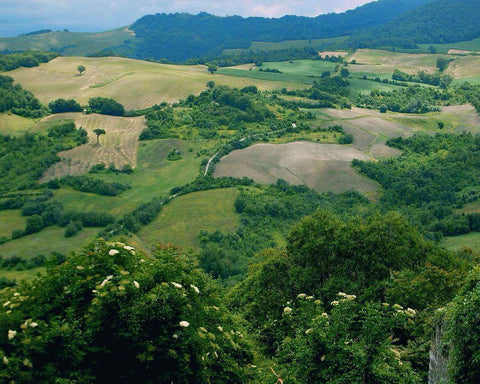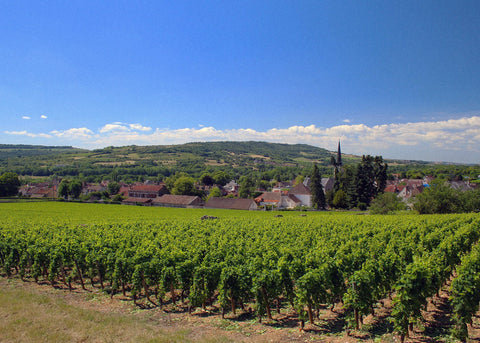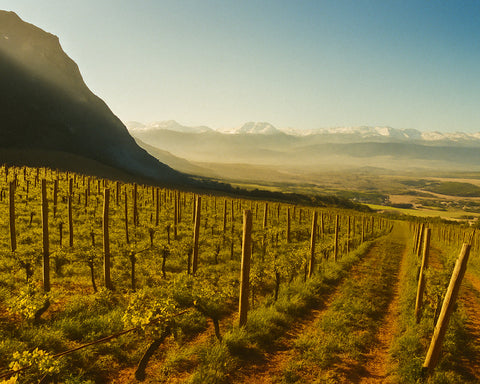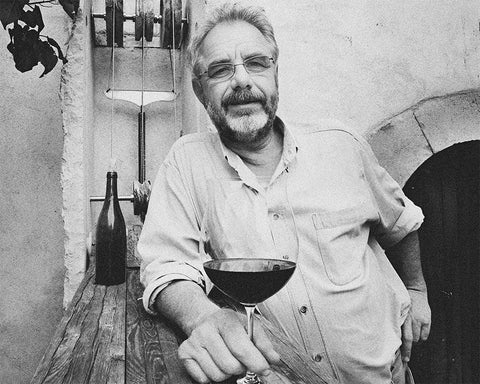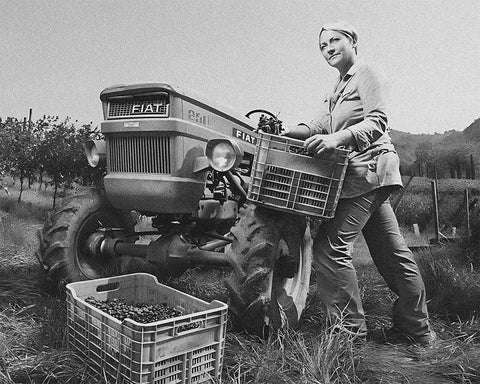Valle d'Aosta, in the heart of the Italian Alps, is renowned for its stunning mountain landscapes, rich cultural heritage, and exceptional wines. Located in the northwest of Italy, France, and Switzerland border this small but vibrant region, offering a unique blend of Italian and Alpine influences that shape its distinctive character and vinicultural traditions.
Over the centuries, Valle d'Aosta has become a sanctuary for organic and sustainable wine cultivation, with a deep respect for the natural environment and a commitment to preserving the purity of its terroir. The region's dedication to quality and sustainability is evident in every bottle produced, reflecting the essence of its mountainous terrain and unique climate.
The wines from Valle d'Aosta are not merely beverages; they are a testament to the region's rich history, its pursuit of excellence, and its passionate commitment to vinicultural perfection, particularly evident in its renowned Nebbiolo and Petite Arvine wines.
Table of Contents
History of Valle d'Aosta
Valle d'Aosta, strategically located in the Alps, has a rich and varied history influenced by numerous cultures, including the ancient Romans, the French, and the Swiss. The region's history is a tapestry of cultural interactions, conquests, and a deep connection to its land and traditions.
During the Roman era, Valle d'Aosta was an important military outpost and a key route for trade and travel across the Alps. The Romans introduced advanced agricultural practices, including viticulture, which laid the foundation for the region's future as a notable wine-producing area.
In the Middle Ages, Valle d'Aosta was influenced by the House of Savoy, which significantly shaped the region's political and cultural landscape. The Savoyards fortified the area with castles and monasteries, many of which still stand today, bearing witness to the region's historical significance.
The region's history took a unique turn when it was granted autonomous status within Italy after World War II. This autonomy has allowed Valle d'Aosta to preserve its linguistic and cultural heritage, which is a blend of Italian, French, and Franco-Provençal influences.
Throughout these historical periods, Valle d'Aosta has remained committed to its vinicultural traditions, continuously adapting and evolving its practices while maintaining a deep respect for its heritage and environment.
Terroir of Valle d'Aosta
The terroir of Valle d'Aosta is characterized by its dramatic alpine landscape, which includes soaring peaks, deep valleys, and terraced vineyards. The region enjoys a continental climate with strong alpine influences, providing ideal conditions for a variety of grape varieties.
The high altitude and steep slopes of Valle d'Aosta create a unique microclimate that is perfect for viticulture. The soils are diverse, ranging from sandy and gravelly in the lower valleys to more calcareous and rocky in the higher elevations, contributing to the distinct characteristics of the region's wines.
This diversity in terrain and climate allows Valle d'Aosta to produce a wide array of high-quality wines, each reflecting the unique attributes of their growing environment.
The Geology of Valle d'Aosta
The landscape of Valle d'Aosta predominantly comprises mountainous terrain, with elevations ranging from 300 meters in the valleys to over 4,000 meters in the highest peaks. The region is divided into several sub-regions, each with distinct geological features that influence the wines' character.
- Donnas: Known for its terraced vineyards and sandy, gravelly soils, this area is ideal for cultivating Nebbiolo.
- Arnad-Montjovet: Characterized by calcareous and clay-rich soils, perfect for producing robust red wines.
- Chambave: With its mix of limestone and rocky soils, this area is renowned for its aromatic white wines.
The geological diversity of Valle d'Aosta ensures that each wine expresses the unique characteristics of its terroir, enhancing the complexity and depth of the region's wines.
Climate and Its Influence
Valle d'Aosta's climate is continental, characterized by cold winters and warm summers, with significant temperature variation between day and night. This diurnal range is crucial for developing grape sugars and acids, contributing to the balanced flavor profile of the wines.
The alpine influences create a range of microclimates, allowing for the cultivation of both cool-climate white grapes and warm-climate red grapes. This climatic diversity contributes to the distinctiveness of Valle d'Aosta's wines and agricultural products.
The Grapes of Valle d'Aosta
Valle d'Aosta boasts several indigenous and international grape varieties, each adapted to the region's unique terroir. The most notable are Nebbiolo, Petite Arvine, and Fumin.
Red Grape Varietals
- Nebbiolo: The cornerstone of Valle d'Aosta's most celebrated red wines, known for its complex aromas and aging potential.
- Fumin: Produces robust and spicy red wines with good tannic structure.
- Petit Rouge: Known for its light and fruity red wines with floral notes.
- Vien de Nus: Produces elegant red wines with a distinct minerality.
White Grape Varietals
- Petite Arvine: The signature white grape of Valle d'Aosta, known for its aromatic intensity and fresh acidity.
- Blanc de Morgex et de La Salle: Produces light and crisp white wines with floral and mineral notes.
- Muscat Blanc: Known for its aromatic and sweet wines.
- Pinot Grigio: A versatile grape that can produce both crisp and full-bodied wines.
Top Wines of Valle d'Aosta
Nebbiolo: Known locally as Picotendro, Nebbiolo from Valle d'Aosta is celebrated for its deep color, complex aromas, and excellent aging potential. These wines are often compared to their counterparts from Piedmont but have a distinct alpine character.
Petite Arvine: This aromatic white wine is characterized by its fresh acidity, floral notes, and a hint of salinity. It can be enjoyed young or aged for added complexity.
Other Notable Wines: Valle d'Aosta is also home to a variety of other notable wines, including Fumin, known for its rich and spicy profile, and Blanc de Morgex et de La Salle, celebrated for its crisp and mineral-driven character. The region's diverse terroir allows for a wide range of wine styles, each offering a unique expression of Valle d'Aosta's character.
Cuisine and Typical Products of Valle d'Aosta
Valle d'Aosta's culinary landscape is as diverse and rich as its history. The region is known for its hearty and flavorful dishes, strongly emphasizing local and seasonal ingredients. Valle d'Aosta's cuisine reflects the influences of its varied past, from Italian to French, creating a unique and vibrant culinary tradition.
Using wild game, fresh vegetables, and high-quality dairy products is a hallmark of Valle d'Aosta cuisine. Other staples include polenta, chestnuts, and mushrooms, reflecting the region's agricultural abundance and alpine environment.
Valle d'Aosta is also famous for its cured meats and cheeses, integral to the local diet and culinary identity. From the savory Lardo di Arnad to the rich Fontina cheese, these products showcase the region's dedication to artisanal food production.
Valle d'Aosta Antipasti
In Valle d'Aosta, a meal often begins with a selection of antipasti, featuring local cheeses, cured meats, and marinated vegetables. These appetizers set the stage for the hearty courses to follow.
- Lardo di Arnad: A cured pork fatback seasoned with herbs and spices, often served thinly sliced with bread.
- Fontina cheese: A semi-soft cheese with a rich, nutty flavor, typically enjoyed with honey and walnuts.
- Motzetta: Dried and cured meat, usually beef or goat, sliced thinly and served with bread and cheese.
- Tegole: Thin, crisp almond cookies that provide a sweet start to the meal.
Valle d'Aosta Primi Piatti (First Courses)
The first course in a Valle d'Aosta meal often features pasta, polenta, or hearty soups. These dishes showcase the region's grains, legumes, and seasonal vegetables.
- Polenta concia: Creamy polenta mixed with Fontina cheese and butter, a staple of the region.
- Seupa à la Vapelenentse: A bread and cabbage soup layered with Fontina cheese and baked until golden.
- Crozet: Small buckwheat pasta squares, often served with a creamy cheese sauce.
- Risotto ai funghi: Risotto cooked with locally foraged wild mushrooms.
Valle d'Aosta Secondi (Second Courses)
Valle d'Aosta is known for its high-quality meats, particularly game and beef. The second course often highlights these prized ingredients, prepared with local herbs and spices.
- Carbonada: A beef stew cooked with red wine, onions, and spices, reflecting the region's alpine heritage.
- Capriolo in civet: Venison stew slow-cooked with red wine, juniper berries, and herbs.
- Costoletta alla Valdostana: Veal chop stuffed with Fontina cheese and prosciutto, then breaded and fried.
- Trota alla Valdostana: Trout from the region's clear streams, baked with butter and herbs.
Valle d'Aosta Contorni (Side Dishes)
Valle d'Aosta cuisine features a variety of vegetable side dishes, highlighting the region's agricultural bounty.
- Cavolo verza: Savoy cabbage sautéed with garlic and olive oil, a simple yet flavorful accompaniment.
- Fagiolini in umido: Green beans stewed with tomatoes and onions.
- Patate alla valdostana: Potatoes baked with Fontina cheese and cream.
Valle d'Aosta Formaggi (Cheeses)
Valle d'Aosta produces some of Italy's most distinctive cheeses, often enjoyed in a cheese course or used in cooking.
- Fontina: A semi-soft cow's milk cheese known for its rich, nutty flavor and creamy texture.
- Bleu d'Aoste: A blue cheese with a strong aroma and bold flavor.
- Toma di Gressoney: A semi-hard cheese with a mild and slightly tangy flavor.
- Reblec: A fresh cheese made from cow's milk, often enjoyed with herbs and olive oil.
Valle d'Aosta Dolci (Desserts)
Valle d'Aosta desserts often feature local ingredients such as apples, nuts, and honey.
- Tegole: Thin, crisp almond cookies, a traditional sweet treat of the region.
- Mont Blanc: A chestnut puree dessert topped with whipped cream, named after the famous mountain.
- Micòoula: A dense and flavorful rye bread with dried fruits and nuts.
- Flantze: A sweet bread filled with dried fruits, nuts, and spices, often enjoyed during festive occasions.
Typical Products of Valle d'Aosta
Valle d'Aosta's cuisine is based on high-quality local products, many of which have achieved protected status, ensuring authenticity and traditional production methods.
Fontina
Fontina cheese, with its rich and creamy texture, is the most famous product of Valle d'Aosta. It is made from the milk of local cows and aged in natural caves, giving it a distinct flavor profile that is both nutty and slightly sweet.
Meat and Charcuterie
Valle d'Aosta meat products are known for their quality and distinctive flavors.
- Lardo di Arnad: A cured pork fatback seasoned with herbs and spices, often enjoyed thinly sliced on bread.
- Motzetta: Dried and cured meat, typically beef or goat, served as a thinly sliced appetizer.
- Boudin: A blood sausage made with pork, potatoes, and spices, reflecting the region's rustic culinary traditions.
Fruits and Vegetables
Valle d'Aosta's varied climate allows for cultivating a wide range of produce.
- Apples: Particularly Renetta and Golden Delicious varieties, used in many traditional dishes and desserts.
- Chestnuts: Used in both sweet and savory dishes, especially in the autumn months.
- Wild mushrooms: Foraged from the alpine forests, used in many traditional dishes.
